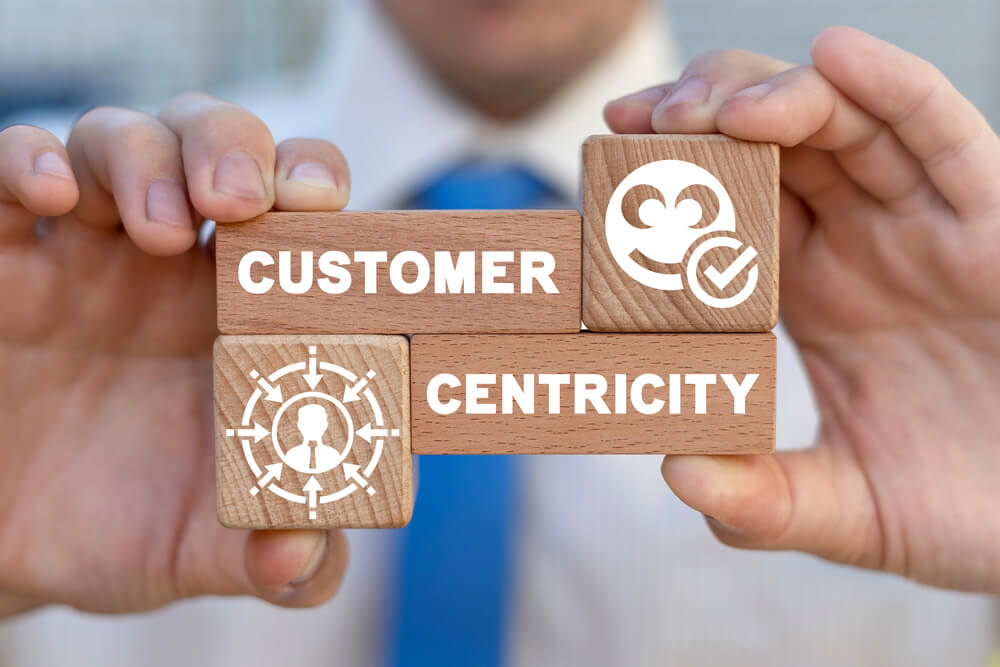
How Do Interim CMOs Craft Strong Customer-Centric Branding?
Interim chief marketing officers (CMOs) are flexible and efficient when crafting strong, customer-focused strategies. They use their senior-level experience to connect a brand to its intended audience.
This article focuses on how an interim CMO builds yours:
- Assessing current brand perception.
- Developing a customer persona-centric approach.
- Aligning brand values with customer needs.
- Personalizing customer experiences and interactions.
- Using data and analytics for customer insights.
- Building trust and loyalty through transparency.
- Implementing customer feedback for iterative improvement.
Read below to find out how transitional CMOs boost your branding efforts. Let’s go!
Want to know how to get a Chief Marketing Officer for your Professional Services Organization without the cost of a full-time employee?
1. Conduct a Rapid Assessment of Current Brand Perception
Interim CMOs manage branding with a quick but thorough assessment of the company’s current brand perception through surveys, focus groups, and social media sentiment analysis.
The process pinpoints critical strengths and weaknesses in its current market position. The insights help develop strategies that resonate more deeply with the target audience and strengthen connections and loyalty.
Suppose a sportswear company wants to build a more differentiated brand. Their CMO checks what target customers think about the business. They conduct surveys and focus groups and monitor social media comments. Do people see the products as good quality and fashionable? Do they share their lifestyle values?
The CMO also discovers that many young athletes view the brand as stylish but not long-lasting. They swing into action to address this customer perception. They work closely with the design team to adjust product specifications, improving durability and longevity.
Listening to customers and quickly addressing their concerns strengthens the brand’s reputation. The market now knows them for their durable, high-performance, trendy sportswear.
2. Develop a Customer Persona-Centric Approach

A transitional marketing executive creates a customer-centric brand using buyer personas derived from market research, demographic data, and consumer insights.
CMOs understand the target audience to craft messaging and strategies that resonate with them. The personas are guides that align marketing efforts with the customers’ needs and desires.
For example, Luca’s is a small family-owned Italian restaurant in a busy downtown area. Despite its location, sales have been declining. The owners hire an interim CMO, Michael, to improve their branding and customer connection.
Michael conducts in-depth market research on the local area and analyzes neighborhood demographics. He identifies two primary customer segments that the restaurant needs to target. The first is young urban professionals working in the nearby offices. They want quick but tasty lunches with fast counter-service.
The second segment is middle-income suburban families looking for an authentic Italian dining experience. These customers appreciate a welcoming atmosphere, attentive table service, and traditional dishes.
Based on these two core personas, Michael:
- Works with the executive chef to tailor the menu offerings.
- Recommends changes to Luca’s ambiance, such as more counter seating and grab-and-go options for fast lunches.
- Runs social media promotions and email campaigns targeting professionals and families.
Michael transforms Luca’s branding by better understanding primary customer needs. Despite competition from restaurant chains, the neighborhood eatery thrives through personalized experiences.
3. Align Brand Values with Customer Needs
A transitional CMO forges customer-centric branding by aligning brand values with the market’s needs. They dig deeper into the demographics, understanding the target audience’s aspirations, beliefs, and challenges. They also continuously monitor consumer behavior and sentiment shifts to maintain the value’s relevance.
Aligning brand values with customers fosters trust and loyalty because customers perceive the brand as genuinely addressing their concerns and priorities.
Consider a new coffee shop that hires an interim marketing executive, Sofia. She conducts market research in the downtown neighborhood where the owners plan to open the cafe. Her studies show a growing demand among young professionals and students for sustainably sourced coffee and ethical business practices around environmental sustainability.
Aligning with these customer values, Sofia recommends that the shop make ethical sourcing and sustainability central pillars of its branding. She advises the owners to partner with small coffee bean farmers in developing countries for fair wages and ethical farming methods.
She also develops a robust community engagement plan on environmental sustainability. This includes initiatives such as discounts for customers who bring reusable mugs, developing composting and recycling programs, and hosting public events to educate people on rainforest conservation.
4. Provide Personalized Customer Experiences and Interactions

Another strategy that transitional CMOs use to create customer-centric branding is personalized interactions and customer experiences. They study individual preferences, behaviors, and past customer interactions to tailor offerings and communications accordingly.
They implement targeted marketing campaigns to enhance customer engagement and satisfaction. They also use data analytics and customer feedback to continuously refine and optimize personalized experiences for relevance and effectiveness.
Suppose a local residential construction company wants to improve customer branding and satisfaction. They hire Wendy, a transitional CMO, who implements a client-centric approach. She leads the initial consultations, having in-depth conversations with the sales team and target market to learn their lifestyle priorities, design preferences, and vision for their ideal residence.
Project managers provide video site tours and email updates throughout the construction process to keep homeowners involved at every stage. For quality assurance, the business asks for real-time feedback and ratings through voice and video tools at the job site.
Leveraging artificial intelligence, Wendy develops targeted customer personas for further personalization. Customers receive home design suggestions based on data of their past website behaviors and purchases.
5. Use Data and Analytics for Customer Insights
Transitional CMOs leverage data from various sources, such as website analytics, social media metrics, and customer feedback, to comprehensively understand customer behavior and preferences. These insights help the CMO avoid inconsistent branding and develop targeted messaging, product offerings, and promotional campaigns.
To illustrate the benefits of data analytics in branding, consider Pacifica Wave, a surfboard manufacturing company struggling to connect with younger customers. They decide to work with a transitional CMO named Diego to reinvigorate the brand.
Diego analyzes Pacifica Wave’s customer data, sales metrics, online reviews, and third-party surf industry reports. He wants to spot the latest trends and preferences among core surfing demographics, such as teenagers and young adults. The data shows high demand among young surfers for retro surfboard designs with modern performance innovations.
With these insights, Diego leads new product development and branding efforts for younger surfing segments. Pacifica Wave introduces fresh surfboard models that blend retro aesthetics, such as wooden inlays and vintage logos, with high-tech features such as carbon fiber and polyurethane foam construction.
He also updates branding through partnerships with top professional surfers, TikTok sponsorships, and glacier-themed packaging reconnecting to Pacifica Wave’s Hawaiian heritage. Customer data helps match each initiative to preferences revealed in Diego’s research.
6. Build Trust and Loyalty through Transparency

An interim executive promotes customer-centric branding by building trust and loyalty through transparency. They promote openness and honesty with customers about products, services, pricing, and company practices.
With clear and accurate information, the CMO demonstrates integrity and accountability, which are fundamental to establishing trust with the audience. Through transparent communication, customers feel valued and respected. This encourages long-lasting relationships and positive brand associations.
Interim leadership uses these strategies to develop transparent communication and brand authenticity:
- Remain clear about the company’s practices, including sourcing, manufacturing, and environmental impact.
- Focus on delivering accurate, honest messaging that reflects the brand’s values and offerings.
- Make customer support channels accessible and responsive to let the customers ask questions, voice concerns, and receive assistance.
- Share authentic stories about the company’s journey, values, and mission to humanize the brand.
- Be upfront about pricing structures, fees, and additional product or service costs.
- Listen to customer feedback and address concerns promptly to acknowledge positive or negative input and demonstrate a commitment to continuous improvement.
7. Implement Customer Feedback for Iterative Improvement
An interim marketing executive develops customer-centric branding using customer feedback for iterative improvement. They establish channels, such as surveys and reviews, to collect and analyze customer input.
How does iterative improvement build a solid brand? Consider Sparkle Jewelers, a small chain of boutique jewelry stores across the Midwest, seeking to update its branding and customer experience. To guide these efforts, they hire Maggie as an interim CMO.
Maggie establishes clear feedback channels to engage with customers. She rolls out post-purchase surveys to garner input on product designs and shopping satisfaction levels. Review cards allow buyers to provide open-ended suggestions. An online customer panel tests ideas with Sparkle’s most passionate longtime clients.
Analyzing the collected data reveals opportunities told through the customer’s voice. Reviews ask for more comprehensive options in the affordable silver collection. Survey scores rate in-store service as excellent but find the ecommerce checkout clunky. Panel members request click-and-collect options to bridge online and physical stores.
Powered by Maggie’s customer-centric system, Sparkle gathers feedback, responds quickly, and enhances experiences. Customers feel heard, which builds loyalty. Reviews and sales grow as the brand better serves diverse customer needs on their terms.
Summing Up
An interim CMO uses a strategic, data-driven, and customer-focused approach to build a robust brand. They have experience analyzing market data, identifying customer insights, and crafting targeted strategies.
Their temporary yet impactful roles enable you to adapt quickly to evolving market dynamics and foster deeper connections with your customers.
How can your company measure the success of customer-centric branding strategies over time? Let the experts answer all your questions about interim leadership. Contact Digital Authority Partners (DAP) for reliable, top-notch digital marketing services.
Want To Meet Our Expert Team?
Book a meeting directly here




